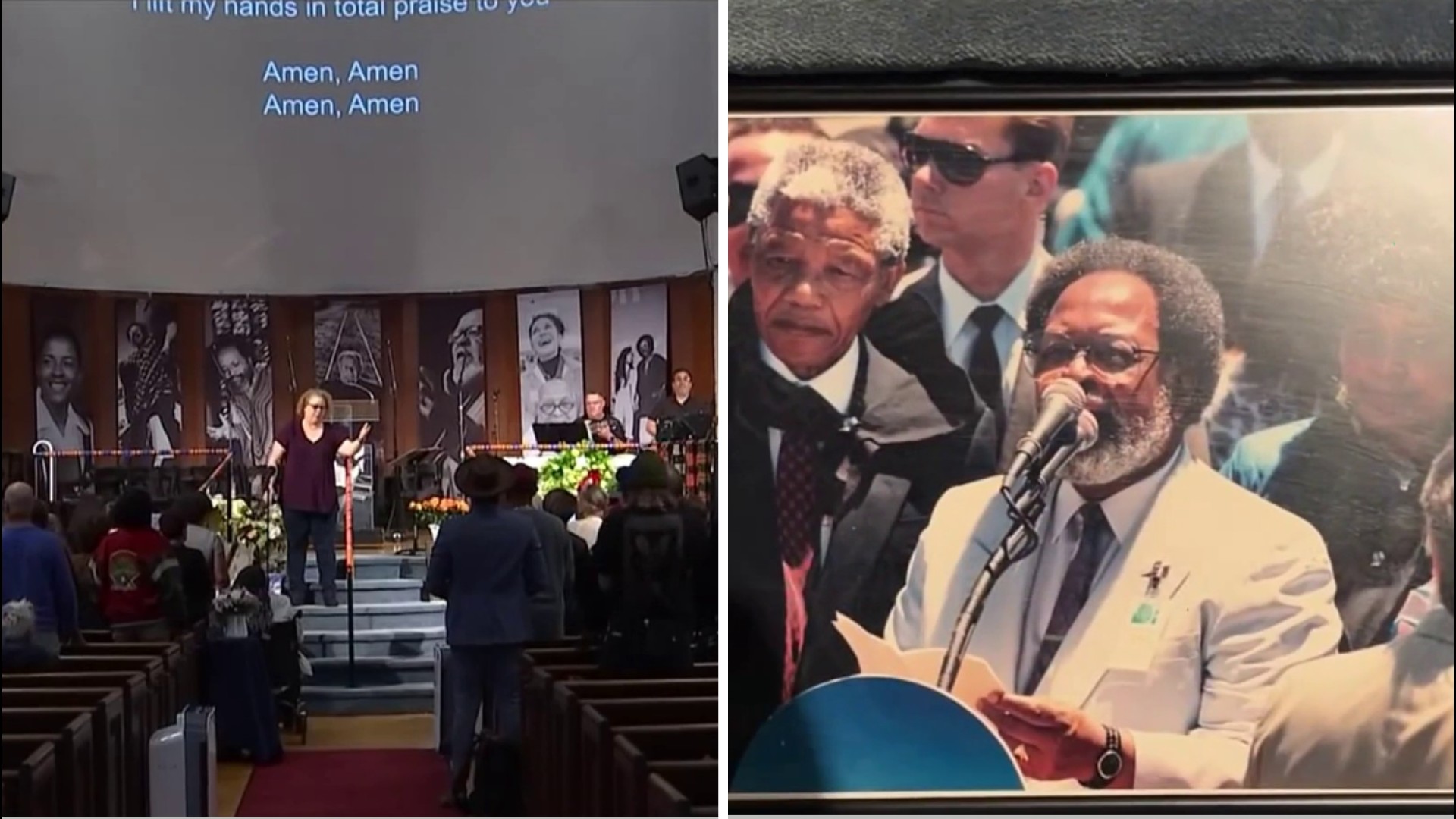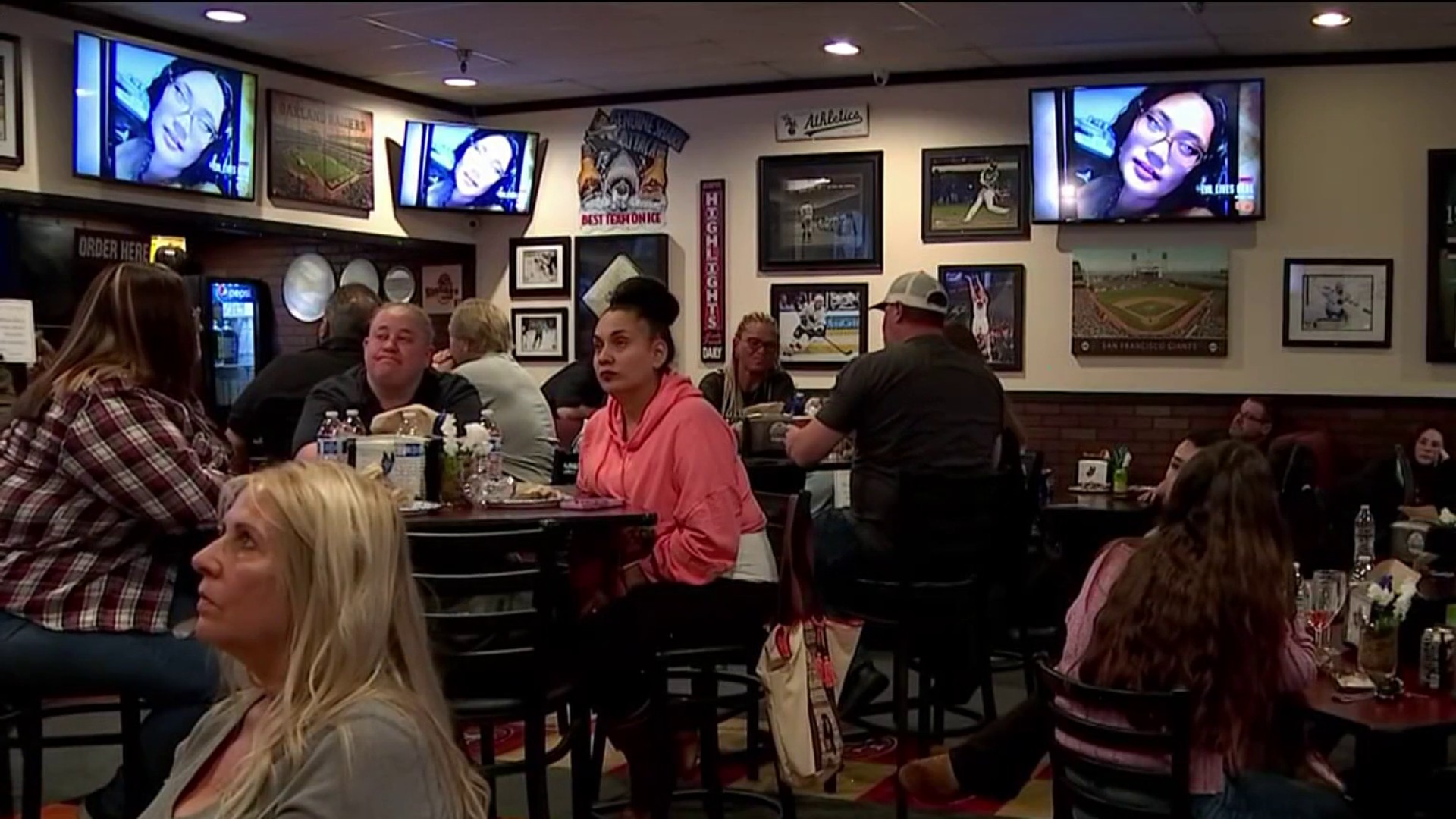Favorable weather helped firefighters trying to save communities on the south end of Lake Tahoe from an approaching wildfire, but officials warned Wednesday that stiff winds and dry conditions mean that homes in the California-Nevada alpine region are still in danger.
“Finally some good news on the weather side of things here on this fire,” Jim Dudley, a meteorologist assigned to the fire, said at an evening briefing. Winds were expected to calm significantly over the next several days, he said, but risks remain with extremely low humidity levels.
The Caldor Fire remained roughly 3 miles (5 kilometers) south of the recently evacuated city of South Lake Tahoe, moving northeast toward the California-Nevada state line, said Henry Herrera, a battalion chief for the agency, which is also known as Cal Fire.
Crews tried desperately to keep flames away from urban communities, where houses are close together and shopping centers, hotels and other structures would provide even more fuel for a fire that so far has been feeding on trees, grasses and scattered homes and cabins.
Get a weekly recap of the latest San Francisco Bay Area housing news. Sign up for NBC Bay Area’s Housing Deconstructed newsletter.
“We’re still not out of the woods. The fire is still moving,” Herrera said.
The blaze has been burning toward Lake Tahoe from the southwest along California Highway 50, climbing over a Sierra Nevada summit and descending into the Tahoe Basin.
On late Wednesday night, President Joe Biden approved California's emergency declaration "due to the emergency conditions resulting from the Caldor Fire."
Local
"The President’s action authorizes the Department of Homeland Security, Federal Emergency Management Agency (FEMA), to coordinate all disaster relief efforts which have the purpose of alleviating the hardship and suffering caused by the emergency on the local population, and to provide appropriate assistance for required emergency measures, authorized under Title V of the Stafford Act, to save lives and to protect property and public health and safety, and to lessen or avert the threat of a catastrophe in the counties of Alpine, Amador, El Dorado, and Placer," White House officials said in a statement.
Gov. Gavin Newsom's office released a statement, thanking the president and Vice President Kamala Harris for quickly approving the state's request for support for the Caldor Fire.
"This will bolster the response to the fire and provide additional support to affected communities. We will get impacted Californians back on their feet," Gov. Newsom's office said in a statement.
Despite the positive developments, firefighters were warned that critical weather conditions remained and they would likely face gusty, swirling winds all day.
Thick smoke from the Caldor Fire has enveloped the city of South Lake Tahoe, which is all but deserted at a time when it would normally be swarming with tourists. On Monday, roughly 22,000 residents jammed the city’s main artery for hours after they were ordered to leave.
South Lake Tahoe city officials said only a handful of residents defied Monday’s evacuation order. But nearly everyone was monitoring the winds, which could determine whether flames bypass the city.
Tom O’Connell and his wife, Linda, awaited the fate of their home while anchored on their sailboat in Ventura Harbor. The two-bedroom they’ve owned for 40 years survived the Angora Fire that destroyed about 250 houses in 2007. They didn’t know if they’d be lucky again.
“You worry about the things you can have some control over,” O’Connell said. “We’ve no control over this.”
Pushed by strong winds, the Caldor Fire has crossed two major highways and swept down slopes into the Tahoe Basin, where firefighters working in steep terrain were protecting remote cabins. The fire has destroyed at least 700 homes and other structures, but officials say it’s too early for an accurate assessment of the destruction.
The fire, which is threatening at least 33,000 more homes and structures, has scorched nearly 320 square miles since breaking out Aug. 14. It was 20% contained.
The Lake Tahoe area attracts 15 million visitors every year and is beloved by locals and international jet-setters alike as a recreational paradise offering beaches, water sports, hiking, ski resorts and golfing. South Lake Tahoe, which borders a portion of the famous lake, bustles with outdoor activities while just across the state border in Stateline, Nevada tourists can gamble at major casinos.
As flames moved toward the Heavenly ski resort on the California-Nevada border, officials turned on the mountain’s snow-making machines to increase humidity and slow down any flames.
To his wife’s dismay, John Rhodes, 60, did not evacuate but stuck around to defend the couple’s neighborhood in an unincorporated area south of South Lake Tahoe that burned in the 2007 fire.
PHOTOS: Caldor Fire Burns Through Tahoe-Area Ski Resort
Rhodes and his neighbors, including several off-duty firefighters from other California agencies, wrapped homes in hoses and ran sprinklers to create a perimeter around the neighborhood to supplement official firefighting work nearby.
As a rookie firefighter, he admitted to butterflies.
“I was anxious about how I would stand up near the hot spot. These guys are trying to get me all coached,” Rhodes said, pointing toward his firefighter friends, who declined to talk to a reporter.
The Caldor Fire not only emptied out South Lake Tahoe, but parts of neighboring Stateline, Nevada. Casinos, however, were excluded from the order and as of Wednesday, were still open. Their hotel rooms were housing evacuees, fire crews and other emergency personnel.
More than 15,000 firefighters, with help from out-of-state crews, were battling dozens of California blazes, including another monstrous blaze in the same area.
The Dixie Fire is the second-largest wildfire in state history at 1,320 square miles. The weeks-old fire was burning about 65 miles north of the Lake Tahoe-area blaze and prompted new evacuation orders and warnings this week.
Climate change has made the West much warmer and drier in the past 30 years and will continue to make weather more extreme and wildfires more frequent, destructive and unpredictable, scientists say. Threat of fire is so widespread that the U.S. Forest Service announced this week that all national forests in California would be closed until Sept. 17.
A firefighter injured while battling the Caldor Fire last weekend was expected to be hospitalized for a month after undergoing skin grafting surgery. Richard Gerety III of Patterson, California, suffered third-degree burns over 20% of his body, the Modesto Bee reported.
Laura Forvilly had planned to stay as long as possible in her Stateline condominium, but her adult children persuaded her to pack up Tuesday and leave in advance of an evacuation order.
Forvilly, who runs boat cruises on the lake, said she took a carload of “all the wrong things -- clothes, of course,” as well as keepsake photos, belongings that can’t be replaced and her three dogs. She arrived at her sister’s house in nearby Reno, where the air was clear and blue.
She’s not worried about her yacht or home. But she’s surprised at how close the fire is.
“I’m so sad our beautiful Tahoe is going through this,” Forvilly said. “It’s hard to believe it’s actually happening this close to where we all live and work.”
Har reported from San Francisco. Antczak reported from Los Angeles. Associated Press writers Jocelyn Gecker in San Francisco and Christopher Weber and Brian Melley in Los Angeles contributed to this report.



